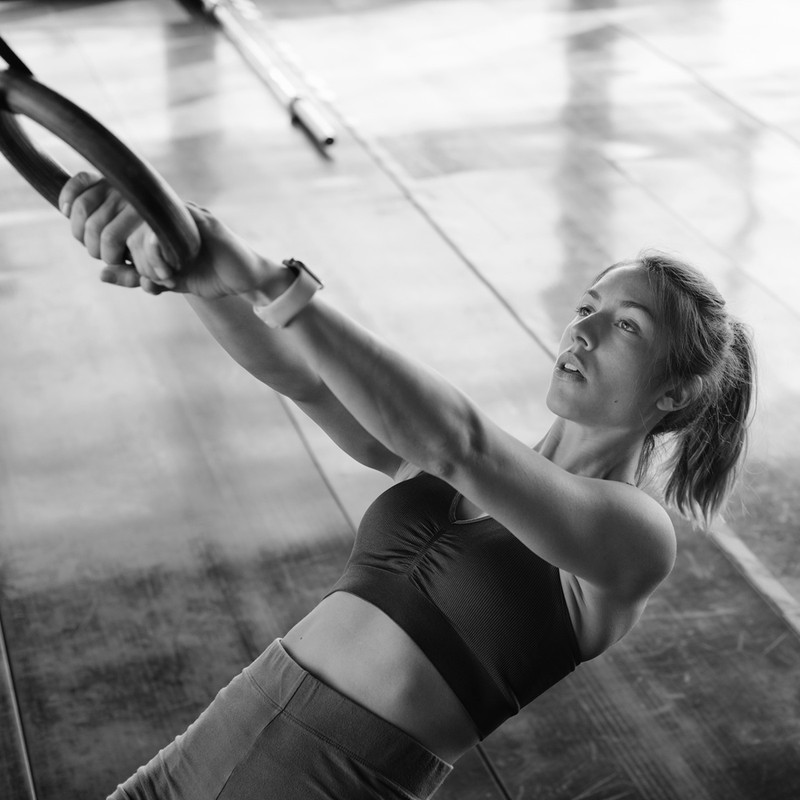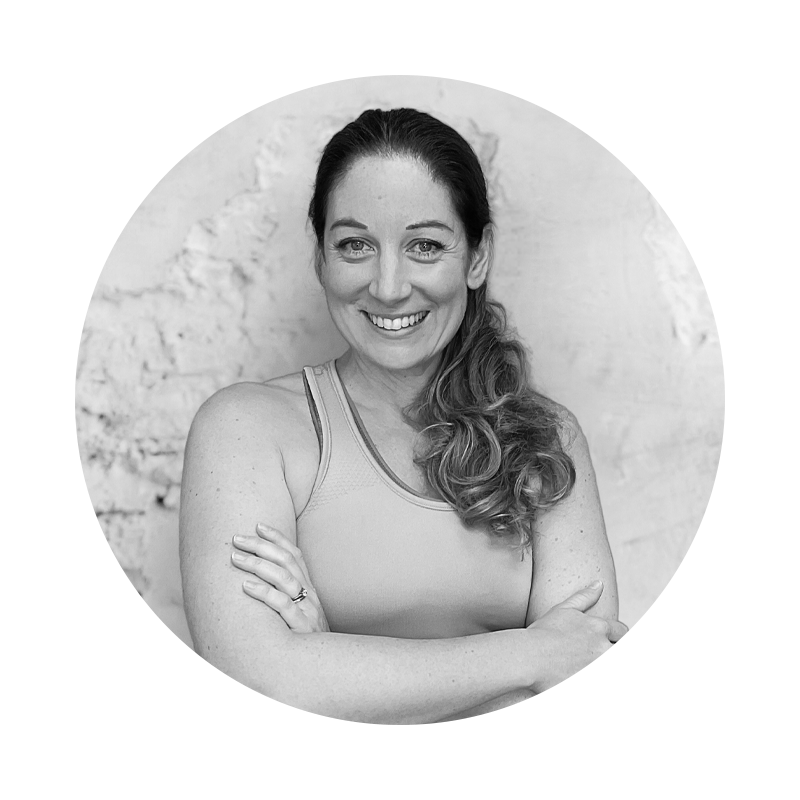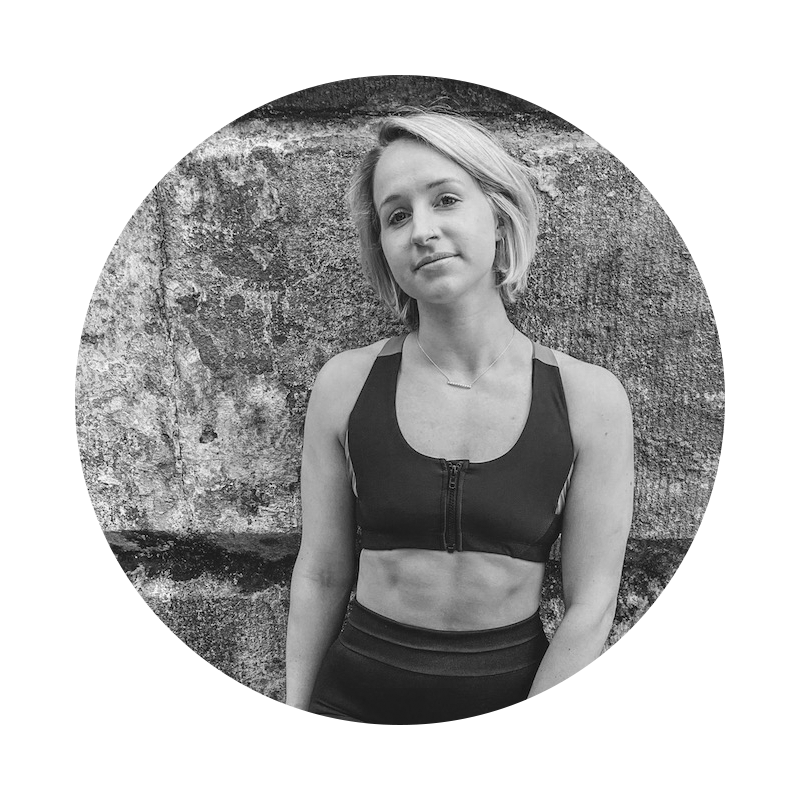The Exercises You Might Be Doing Wrong & How To Fix Them
Don’t Rush A Press-Up
“The most common exercise I see women in particular getting wrong is a press-up. So many point their elbows out to the side, with the core sagging and head dropping. Your hands need to be wider than you think, with your elbows pointing back – think where they would be at 4pm at 8pm on a clock face. Keep your back straight, with your head in line with the body. Your abs also need to be pulled in tight to support your back. It’s far better to practise on your knees until you have it completely correct, otherwise you won’t see results and you may end up hurting your back.”
Avoid Swinging Your Arms When Using Weights
“The bicep curl may seem like a simple move but it’s easy to get it wrong if you’re not concentrating. So many women swing their arms when doing a bicep curl, but your elbows need to be locked in against your side and controlled on the way up as well as the way down. Stand tall, and keep your core engaged throughout.”
Keep Your Back Straight In A Squat
“It’s so important to nail your squat technique. Bending forward, not squatting low enough, arching your back and allowing your knees to cave inwards are all common mistakes. Your back needs to be straight, with all your weight going through the heels, sending your hips back, with your knees behind your toes. You can always practise with a chair behind you as if you were trying to sit back into it.”
Think Quality Over Quantity With Crunches
“When it comes to crunches, sit-ups and bicycle crunches, it’s tempting to choose speed over form, which can result in you pulling on your head with your back arching off the mat. These moves need to be slow and controlled, with your back on the mat, eyes to the horizon with your chin tucked down. If you are doing a bicycle crunch, slowly bring the elbow across to the opposite knee while extending the bottom leg – quality over quantity every time.”
Lunge In A Straight Line
“A common mistake with lunges is not taking a big enough stride forward – you want to ensure your back knee is as close to the ground as possible, whether it’s a forward or reverse lunge. Also, be sure to keep your core engaged with your shoulders back and chest lifted. Many people fall forward into their lunge and then round their shoulders, which then puts all your other muscles out of alignment as well as placing extra pressure through the front knee. Stand tall, pull your shoulder blades back and draw up and in from your pelvic floor. Your shoulders and hips should be in the same line as you go into your lunge.”
Visit CarolinesCircuits.com & follow @CarolinesCircuits
Always Engage Your Core
“Regardless of what exercise you’re doing, the most important thing to master is learning how to engage your core. If your lower abs don’t engage properly, it’s likely that your back will try to ‘help’ instead and end up in pain. Full core engagement does take practice but once mastered, you’ll find your ability in the gym vastly improves and back pain will reduce. Start by lying on the floor with your knees bent. Tilt your pelvis forward to ensure your back is flat on the floor. Place your fingers on your lower abs (find your hip bones and walk your fingers in about an inch), they should feel soft and disengaged. Breathe in deeply and aim to tighten your muscles while taking your out breath; you should be able to keep your muscles tensed while breathing in and out.”
Protect Your Back When Focusing On The Triceps
“Your triceps are a significant part of your arm muscles, but they tend to give up easily when asked to perform weight-based exercises. To ensure your back doesn’t try to get involved, hinge your body at the waist as low as you can get it towards 90°, and make sure your back is straight. Hold your bent arm close to the side of your body and push your hand away, straightening your arm behind you. Try to ensure you don’t twist your body to compensate for your triceps not wanting to do the work.”
Don’t Overstretch Your Chest
“A chest press done with dumbbells is a simple move, but if it’s not done properly it’s possible to overstretch your pectoral (chest) muscles and not work them at all. Start by choosing a weight you know you can manage easily, and lie on the bench, ensuring you can comfortably reach the floor with your feet. If you can’t, place your feet on the bench and tilt your pelvis towards you to ensure your back is flat. Start by pushing the weights straight up into the air with the dumbbells facing each other, then slowly twist your wrists, separate your hands, and bring your arms down to create a fork shape. Your arms should be at a 90° angle and no lower than the bench. Keep the tempo of this move to two seconds down, holding for one second, and then two seconds up.”
Visit Live-Happy.app & follow @LiveHappy.App
Hinge At The Hips For The Perfect Deadlift
“Deadlifts are a fantastic exercise that can help strengthen the glutes, hamstrings and back. They are, however, incredibly tricky to get right. The most common mistakes are having a rounded spine due to poor hip flexion (bending at the hip) or weakness in the lats and upper back, causing a rounding of the shoulders. Often, people will keep their weight too far forward in their toes and focus more on pulling the bar up, rather than pushing the floor away. When setting up for a deadlift, think about folding at the hip, pushing the bum back while maintaining a straight spine. Keep your knees slightly bent and as you come to the top, think about driving the floor away from you and use your glutes to bring you to standing.”
Don’t Forget To Breathe & Brace
“The importance of breathing and bracing is underrated within training, but nailing it can have a significant impact, allowing you to get more out of each movement, target the right muscles and help you avoid injury. The most common mistakes are either not breathing at all throughout an exercise, not bracing, or breathing shallowly from the chest. Bracing properly also protects the spine. A simple way of approaching breathing when exercising is to focus on breathing out as your target muscles contract: on a squat this would be as you press the floor away; and on a dumbbell row, for example, this would be as you pull the weight towards you.”
Visit FitByFloCollective.com & follow @FitByFloCollective
DISCLAIMER: Features published by SheerLuxe are not intended to treat, diagnose, cure or prevent any disease. Always seek the advice of your GP or another qualified healthcare provider for any questions you have regarding a medical condition, and before undertaking any diet, exercise or other health-related programme.
DISCLAIMER: We endeavour to always credit the correct original source of every image we use. If you think a credit may be incorrect, please contact us at info@sheerluxe.com.





